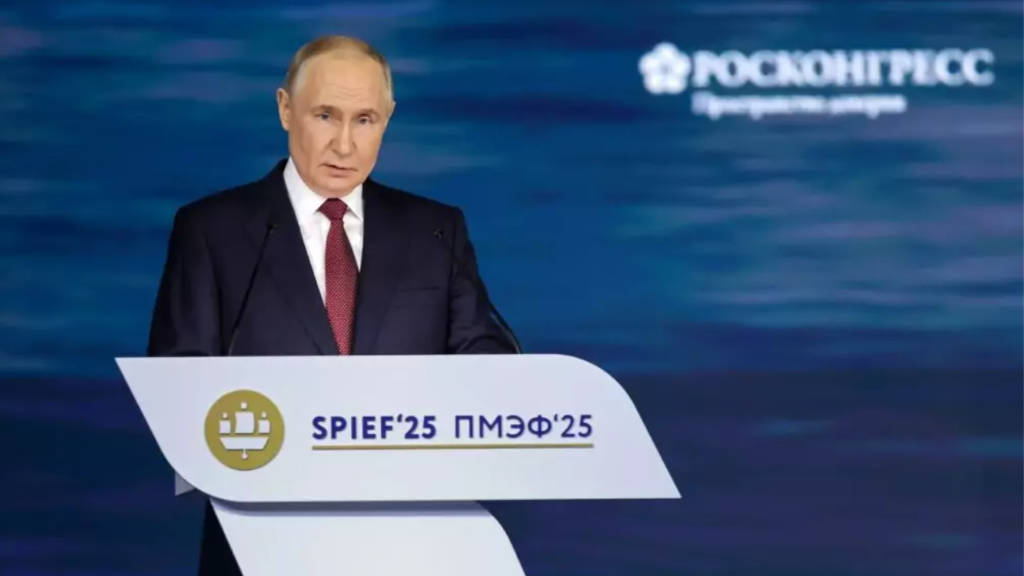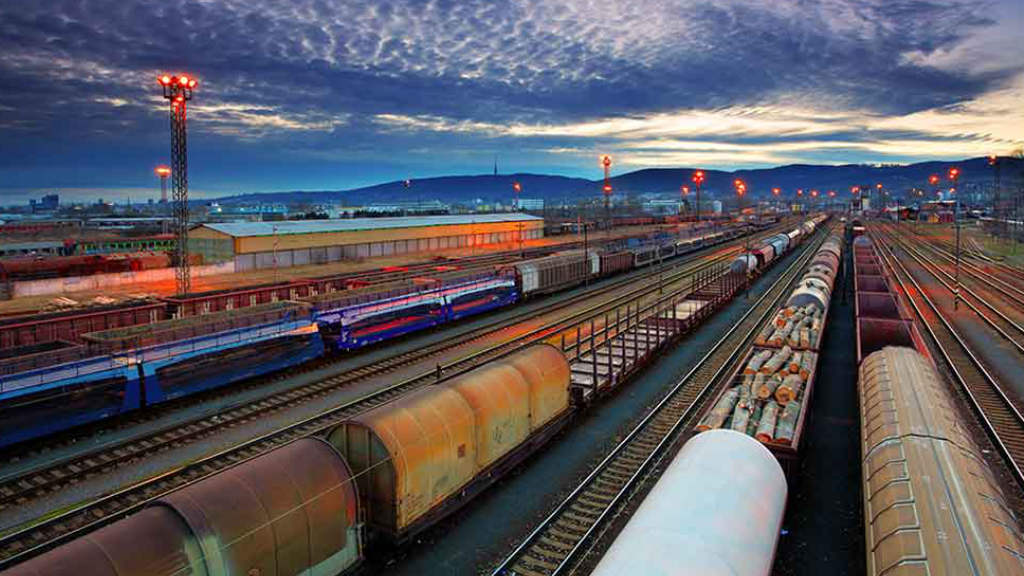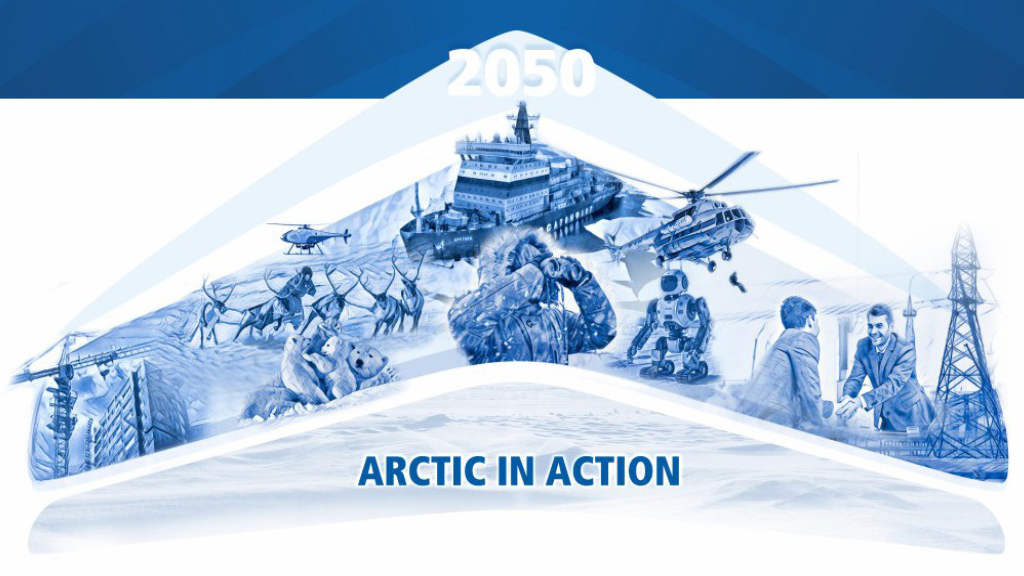Vladimir Putin has given the annual plenary speech at the St.Petersburg International Economic Forum (SPIEF). The main basis for his speech was all Russian domestic policy, in which he discussed the Russian Economy, Monetary Policy, Employment, Education, Tax and Funding Policies, Tourism and Recycling, Russia’s Investment Climate, Technological Development and Funding, Digitization, Foreign Trade, Defence & Security, Future Growth and the BRICS. We have divided his speech up into these separate categories. Putin’s comments are prefixed VP, our analysis is prefixed RPA.
VP: “This year, amongst important topics, is the quality of growth in the context of a multipolar world and major global challenges. These include profound shifts in the global economy and demographics, such as the planet’s population dynamics, as well as social, public, and geopolitical tensions that manifest through crises and rapidly escalating regional conflicts, unfortunately visible today in the Middle East.
These include climate change and urgent environmental issues that demand our attention and response. And, of course, the transition to a new technological era driven by digital platforms, artificial intelligence, and autonomous systems capable of making decisions independently of human input is also a central focus.
The key question is how to ensure that positive technological advancements are accessible everywhere, so that new digital and technological solutions enable countries, regions, and cities to achieve new levels of development and progress. It is essential that the benefits of these technological breakthroughs are shared broadly, transforming society, reducing poverty, improving quality of life, and providing equal opportunities for every individual to acquire the knowledge needed to fulfil their potential. In other words, it is crucial to uphold the fundamental principle of justice.
In my speech, I will focus on the challenges Russia faces in these areas, the steps we are taking in collaboration with business, scientific, and public organisations, as well as the approaches we propose to support economic growth, not only within our country but also through creating joint mechanisms for global and regional development in partnership with our friendly nations.”
Russian Economy

“I will start with the current state of the Russian economy. Despite a challenging international landscape, Russia’s GDP has been demonstrating an annual growth rate of over 4% over the past two years, which is above the global average.
Regarding the structure of this growth, let me share a specific indicator with you – Russia’s non-oil-and-gas GDP. This excludes sectors related to hydrocarbon production. In 2023, Russia’s non-oil-and-gas GDP increased by 7.2%, followed by an additional 4.9%, in 2024. These are solid figures exceeding the overall GDP growth rates.
In other words, commodities no longer play a defining role in Russia’s economic growth patterns. Moreover, the contribution of the commodities sector is even negative currently.
Incidentally, defence manufacturing was not the only driver of our overall GDP growth, as some in the West may believe. It did play a role in this regard, but we must keep a close eye on the way this growth has been structured.
Over the past two years, the top performing industries have included agricultural production, manufacturing in general, the construction industry, logistics, services, finance and the IT sector, covering almost all the key, essential segments of the national economy.
What does this mean? It means that thanks to the efforts of tens of thousands of enterprises and companies, their teams, managers, and their proactive approaches, as well as the work of millions of entrepreneurs, the Russian economy has been steadily developing, achieving new heights in terms of quality, complexity and diversity. The idea of the Russian economy being completely commodity-based and dependent on the exports of hydrocarbons is clearly outdated; it is becoming a thing of the past. We are living in a different reality now.
Russia is the world’s fourth largest and Europe’s number one economy in terms of GDP. I am not talking about the per capita GDP, but about the sheer size of the economy. Still, this is a major milestone.
Of course, achieving this result is not enough. It is essential that we consolidate our standing as a major economy by offering a business-friendly environment so that businesses from Russia and our friendly countries can invest their assets here, as well as upgrade and expand their manufacturing capabilities in Russia.”
RPA: Putin is quoting Russia’s GDP figures based on Purchasing Power Parity (PPP) data. For comparisons with other economies, please see here.
Monetary Policy
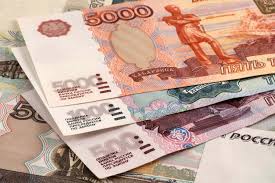
“Our key task this year is to ensure that the economy transitions to a path of balanced growth. What does that mean? We understand it to mean that we must achieve moderate inflation and low unemployment. According to statistics, annual inflation has already dropped to single-digit levels below 10%. As of June 16, it stood at 9.6%. That is still high, but inflation targeting continues.
Certainly, this outcome is due both to the Government’s steady efforts to develop the supply side of the economy and to the responsible actions of the Central Bank. That said, I would like to highlight the following: inflation dynamics have been better than many experts expected and even better than the forecasts made by the Bank of Russia. This has made it possible to start cautious easing of monetary policy.
However, consumer price changes are only part of the picture. To reiterate, balanced growth means moderate inflation, low unemployment, and continued positive economic dynamic. It is important to keep all indicators of the health of our industries, companies, and even individual enterprises in focus.
I would like to note that in the first four months of this year, Russia’s GDP increased by 1.5% year-on-year, including 1.9% growth in April alone. At the same time, some experts point to risks of stagnation or even recession. That, of course, must absolutely be avoided.
We need to pursue sound, well-designed fiscal, tax and monetary policies, aligning these mechanisms above all with the goals of supporting and stimulating growth, while, of course, maintaining macroeconomic, inflationary, and financial stability.
In other words, our strategic vector is precisely to actively and consistently transform the structure of the national economy, step by step. We have achieved a great deal in this area, but it is clear that moving forward is critically important, especially in light of the dramatic changes taking place in the world.
We discussed the need for additional measures on this issue at the Council for Strategic Development and National Projects back in December 2024. Working together, the Government, regional authorities, businesses, experts, and the scientific community identified key tasks to accelerate long-term growth and structural changes in the economy. Today, I will focus on these critical areas in a broader context.”
RPA: Russia’s economy is cooling off – as was forecast – however is still showing growth rates higher than most European Union members.
Employment
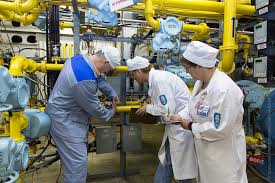
“Foremost among these is the transformation of employment and consumption patterns. We must create conditions that boost the economic activity of our citizens, enabling both young and mature individuals to realise their potential in the labour market, acquire new skills, build successful careers, and increase their incomes.
In other words, we are aiming for a transition to a high-wage economy, not driven by labour shortages that compel employers to raise wages to attract workers but grounded in improving job quality and boosting labour productivity.
Over the past four years, employment in Russia has grown by 2.4 million people. Since October last year, the national unemployment rate has stabilised at around 2.3%, reaching a historic low. Importantly, this positive trend extends to regions where employment challenges have traditionally been acute. Russian colleagues are well aware that this primarily refers to southern Russia and the North Caucasus, where unemployment has been reduced roughly by half – an excellent achievement.
This success is the result of a combination of sound macroeconomic policies, proactive regional government initiatives supported by federal employment programmes, and the broad adoption of modern technological solutions such as platform-based employment and digital marketplaces.
I would also like to highlight that employment is increasing notably among young people who are just entering the labour market and securing their first jobs. In terms of youth unemployment, Russia ranks among the best globally, with a rate of approximately 7.5%.
For comparison, youth unemployment stands at around 16% in France and 11% in the United Kingdom. Globally, youth unemployment remains one of the most pressing economic and social challenges. In Russia, however, we are clearly moving in the right direction. I believe we can confidently say that we are coping successfully with this issue.
Of course, there is still room for improvement. However, I want to emphasise once again that the progress made in this area is clear. This is particularly important because the impact of active youth employment extends far beyond the present moment. A strong start and being in demand in the labour market shape a young person’s successful professional career, their role in society, and greatly influence their decision to start a family, care for their parents, and raise children – not just the first child, but hopefully the second, third, and beyond. This is a vital matter for the country’s social, economic, and demographic development.
Employment is growing in the sectors that produce final products, in high-tech economic areas, including the manufacturing sector, information technology, and tourism. Meanwhile, in supporting sectors such as trade, public administration, and finance, employment is objectively and justifiably declining. These – I believe some are aware, though perhaps not everyone – are very positive trends and a commendable indicator.
For reference, if we consider the dynamics: in the information and communications sector, there has been an increase of 353,000 people – a rise of 29.7%; in manufacturing industries – 10.2%. Conversely, the number of workers in trade, for example, has decreased by 170,000 people – a drop of 3%.
These are gradual but highly significant and important trends that reflect structural, qualitative changes. We intend to continue – through enhancing economic efficiency and implementing digital platform solutions – to facilitate a reduction in the share of employment in so-called supporting sectors. Naturally, we must provide those employed in these areas with alternatives.
To achieve this, we will encourage the creation of modern, more attractive jobs with high labour productivity that align with the new technological paradigm. Labour legislation must be further refined to meet its demands and, most importantly, in the interests of the people. The Government has prepared a package of such amendments, and I request the State Duma to adopt them without delay.
High-quality, structurally new employment is the key to increasing citizens’ and households’ incomes and reducing social inequality. Of course, this remains a challenge for us, but we are addressing it consistently. We have already accomplished much to ensure the accelerated growth of incomes for the least well-off citizens and have achieved – I wish to emphasise this separately – we have achieved a record reduction in the poverty rate in Russia.
By the end of last year, it stood at 7.2%, and the positive trend continues. In the first quarter of this year – compared to the same period last year – the number of citizens with incomes below the subsistence minimum decreased by more than 2 million people.
In 2000, the poverty rate in the Russian Federation was 29%, and – let us be frank – as many as a 42.3 million people found themselves in this humiliating situation. By the end of 2024, this was no longer 29%, but 7.2%, and not 42.3 million people, but 10.5 million people. Obviously, we must strive to reduce this figure further – and that is precisely what we intend to do: lowering it to 7% and then to 5%.
However, the level of wages across the economy in Russia is still insufficient, and I would like to stress this as well. I have said that we need to set ambitious goals and create an economy of high wages. Let me repeat this once again because this is important – this should be done through higher labour productivity. Let me also note that the share of wages in Russia’s GDP increased from a little over 40% in 2021 to almost 44% in 2024.
So, what do we focus on? First of all, we made it one of our priorities to adapt educational programmes to the needs of the real sector. By the way, the recent downward trend in youth unemployment, which I just mentioned, shows that we are on the right track.”
RPA: Putin’s reference to the Russian economy being in transition is showcased through the movement of job creation in high tech and related industries as opposed to traditional industries. Balancing growth in new tech as well as the manufacturing sector requires very specific planning. The elimination of poverty is also impressive and is following a similar course to China’s efforts to do the same during the 2000’s.
Education

“This month, Russia released the first official ranking of higher education providers by employment outcomes and graduate salaries. This indicates which professionals are most in demand in the labour market, and which universities offer the highest quality training and, importantly, produce the most sought-after specialists.
This ranking is also a key indicator of how effective a university’s management team is. I would like to ask the heads of relevant ministries and our colleagues at the federal and regional levels to review this ranking and use it as a tool for managing changes in professional training.
In order to raise individual incomes, we must invest in professional development and retraining programmes, empowering employees to grow professionally, transition between companies or relocate to other regions. Increased workforce mobility doesn’t just benefit workers who seek higher-paying jobs and career advancement. It also fuels economic growth.
Equally critical is investing in modern equipment, embracing automation and robotics. In turn, these advanced technologies demand skilled professionals to operate and maintain them, creating well-paid jobs in the process.
I would like to emphasise that while higher wages primarily benefit workers – raising their living standards, improving family well-being, and creating better conditions for their children – they also strengthen the economy and the nation. Higher incomes and reduced inequality reshape demand. These things are deeply interconnected. When demand becomes more balanced, it stimulates greater consumption of domestic goods and services.
I am referring to essential industries such as tourism, public catering, and sectors that capitalise on our natural heritage, unlock the potential of cities and towns, and make urban spaces more comfortable and convenient for living, working and recreation.”
RPA: This shows how the Russian economy is being driven by considerable data analysis to illustrate what the Russian economy needs and when. Education planning to provide for tomorrows jobs and wealth creation is key.
Tax and Funding Policy
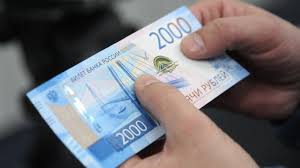
“In this regard, we have agreed to introduce a new taxation system for catering – with a flat VAT rate. Part of the tax revenues will go directly to municipalities, providing them with additional resources for local development projects and programmes, primarily to improve the quality of life in their communities.
We will also actively support the fast-growing sectors of the creative economy – those connected with science, culture, and arts. This includes architecture and design, film and music, publishing and software development, and all facets of what experts call the experience economy.
This year, a federal law came into force that provides a legal basis for promoting the creative industries. By the end of the year, 70 Russian regions will begin implementing development standards for this modern segment of the economy and public life and will start building the necessary infrastructure.
To make this work more thorough and consistent, I am asking the Government, in conjunction with the constituent entities, to draft a long-term Strategy for the Development of the Creative Economy, and also to consider launching a federal project in this area.
Separately, I would like to mention the improvement of the Russian cities and towns’ tourist appeal. Historic buildings, churches, estates, and cultural heritage sites are the tangible embodiment of our national identity and uniqueness, true tourist magnets.
We have agreed that by 2030 we will renovate and refurbish at least 1,000 such sites across the country, giving them a second lease on life by opening museums, educational and exhibition centres, hotels, and so on.
A pilot programme for restoring cultural heritage sites with subsidised lending provided for such projects has already covered nine Russian regions. The next step is to expand it to cover the rest of the country.
For the allocated funds to have greater impact, I propose to combine the resources of two subsidised lending programmes – one for developing tourism infrastructure, and the other for preserving cultural heritage sites.
That way, additional low-interest funding can be attracted for restoring and overhauling historic buildings for business use, among other purposes. In addition, I propose extending the umbrella guarantee mechanism from the SME Development Corporation to cover these projects.
In addition, cultural heritage sites typically involve a complex investment and construction cycle. This process is time-consuming and should be reasonably shortened by cutting excessive formalities without compromising the preservation of historical monuments.
I am asking our colleagues from the Presidential Executive Office to prepare, within the framework of the relevant interdepartmental group, solutions both for this matter and for the overall restoration of cultural heritage sites.
RPA: Russia is simplifying its tax code while at the same time strengthening its payment architecture. VAT is generally a flat rate of 20% while service industries for Russian exports and national travel are subsidized to encourage movement and trade development. This compares with an average EU VAT rate of 21.8%. Investors interested in the business sectors Putin mentions should ascertain the applicable VAT rate as some sectors may be zero rated.
Tourism & Recycling
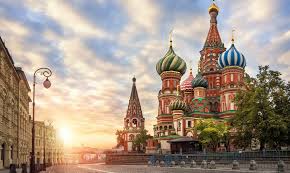
Earlier, I mentioned the tourism infrastructure development programme. We are actively involving our national parks in the tourism sector, creating conditions for visitors, while ensuring respectful and careful treatment of nature and protected ecosystems.
This is another example of Russia implementing an environmental agenda: not chasing short-term profit at the expense of natural wealth but preserving and increasing it for the benefit of the people and society at large.
Over the past decades, millions of tonnes of industrial and mining waste have accumulated in our country. Naturally, it is harmful to nature and people and creates problems.
I propose considering the launch of special projects to extract valuable components from this waste. The appropriate technologies are available, and all we need is to use them. That way, businesses can simultaneously generate revenue, help eliminate accumulated environmental damage and stimulate the development of domestic research and the manufacturing industry, as well as contribute to improving the environmental situation.”
RPA: Putin linking Russia’s push to develop domestic tourism while at the same moment mentioning the recycling industries is an interesting combination.
Russia’s Investment Climate
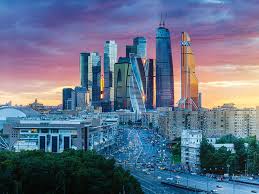
“The development of new production, high-tech, and service sectors, along with the expansion of economic activities – these are all elements of structural changes in Russia’s economy.
In this regard, the second key focus of our actions concerns the new quality of the investment climate. Essentially, we are talking about a fundamental minimisation of business costs for entrepreneurs across all areas – from construction and utility provision for new projects to ongoing operational activities, including all forms of accounting and notarial services.
Here we are working in close cooperation with the regions, business circles, and experts. Together, we are ensuring that business and investment activity grows across the entire country, in every city, town, and locality.
Let me remind you of our target: the volume of investments in fixed capital in Russia should increase by no less than 60% by 2030 compared to 2020.
The Government has already launched a system to support investment in the regions. It provides comprehensive, end-to-end support for investors, right up to a facility’s launch, with access to all support mechanisms, including tax benefits and deductions.
We will carefully monitor this practice, make adjustments based on business feedback, requests, and needs, and, of course, learn from the regions that are leaders in raising investment, scaling up their successful experience and best practices.
I would like to share the results of the national investment climate ranking, maintained by the Agency for Strategic Initiatives. The ranking now covers more indicators – 82 compared to 70 previously – meaning it has become more detailed, thorough, and consequently more informative.
Russia’s capital, Moscow, continues to lead this ranking. It is followed by the Republic of Tatarstan and the Nizhny Novgorod Region, which showed the highest index growth this year. Both regions share second place with equal scores. Moreover, their current investment attractiveness parameters exceed those of Moscow in the previous year.
What does this tell us? That the benchmark for leadership is constantly rising. In improving the investment climate, we cannot stand still – we must always look ahead and set new targets.
Third place in the ranking goes to the Moscow Region and the Republic of Bashkortostan. In total, 57 regions improved their composite index over the past year. Special mention goes to the Chelyabinsk, Tver, Smolensk and Kaluga regions, as well as the Voronezh, Saratov, Sakhalin, Novosibirsk and Lipetsk regions, and the Altai Territory – they showed the highest growth rates.
As I mentioned earlier, alongside supporting investments, we are improving the conditions for day-to-day business operations. As is well-known, this encompasses numerous tasks – from company registration to resolving insolvency matters.
The Government, together with entrepreneurs, industry experts, and specialists from the Agency for Strategic Initiatives, has launched a comprehensive initiative to develop a National Model of Target Conditions for Doing Business. While based on international methodologies, it considers our specifics and national development goals. This model should be finalised by September of this year.
What does this involve? Concrete, measurable changes that businesses can tangibly feel. For instance, by 2030, we aim to reduce by nearly half the time required for grid connection and decrease the time spent on preparing and submitting tax documentation by more than one-third.
The benchmark for the National Model is for Russia to rank among the top twenty business environments globally by 2030, subject to updated international methodologies, and to serve as an example for our BRICS partners and friends.
Above all, it is essential that the business climate allows us to expand and strengthen the foundations of our economy, rendering it both more resilient yet dynamic, with a focus on increasing the production of goods and services, as well as promoting them both domestically and globally – on international markets, for export.
I would like to emphasise that the competitiveness of our domestic industry, agriculture, services sector, and many other industries must be based on our own technological solutions.
This represents the third direction of structural transformations: Russia’s economy must become more technologically advanced. And this is not merely a desire – it is an imperative requirement of today, and indeed of tomorrow, a challenge that must be met if we aim to grow stronger.”
RPA: Putin has set high inbound investment goals of 60% above 2020 to be achieved by 2030. That will require additional tax breaks and other incentives to free up domestic Russian capital and motivate foreign investment. In mentioning various Russian regions, it can be expected that new Special Economic and related zones will appear. Getting investment finance into the developing economy is a key issue for Russia.
Russia’s Technological Development & Funding

“We must fully unleash a new phase of the country’s technological development. The key instrument in this regard should be the national projects aimed at securing technological leadership. These were launched this year, and my colleagues and I have agreed that the measures under these national projects will be updated and expanded.
By 2030, combined public and private spending on research and development in Russia must increase to no less than 2% of GDP. Here, a special role is assigned to private business. Its investments in these areas must increase at least two-fold.
In this context, I would like to highlight the following. Nearly 24 development funds and institutions are focused on supporting the technological modernisation of Russia’s economy. However, each of them has its own methodology and approaches. As a result, entrepreneurs have to process the same technical and other documentation in different ways.
On the other hand, development funds and institutions compete for the same projects. Yes, competition is certainly beneficial, but in this particular case, such “departmental” rivalry does not serve the cause – on the contrary, it diminishes the efficiency of financial and organisational resources.
Not long ago, we created a special working group under the Council for Strategic Development and National Projects chaired by head of Vnesheconombank Igor Shuvalov. I am asking our colleagues from this working group to analyse the technological activities of the development funds and institutions.
The objective is to eliminate overlapping functions, to coordinate the work of the development institutions, and to draft single requirements for business support procedures ranging from patent registration to the serial production of high-tech products.
Notably, over the past two years, the number of patent applications from domestic companies and research organisations has increased by 13%, which is a good number. This includes growth in optical and computer technologies, consumer goods, and pharmaceuticals.
However, it is important to not only develop solutions, but also to quickly bring them to the market in the form of goods and services that are in demand both domestically and internationally and can improve quality of life and make life more comfortable and convenient.
We agreed that our colleagues from the Government will personally oversee the implementation of innovative technologies within their respective areas of responsibility and will fine-tune the regulatory framework to support experimenting, testing, and scaling of promising solutions.
Additionally, I believe the Government should compile an annual report on the dynamics of the country’s technological development. This report should assess the current level of technological sovereignty and breakthrough innovations in technological leadership, as well as the pace of their adoption across sectors of the economy.
Unfortunately, the current rate of commercialisation of inventions from the scientific and academic sectors remains low. For example, among small innovative enterprises created by universities and research institutions, only one in a hundred inventions reaches practical application. To reiterate, this number is too small and clearly insufficient. There must be more active cooperation between educational institutions, research institutes, and the business community. We must help them find each other.
We have a programme called University of Entrepreneurs. Within its framework, experienced businesspeople work together with students in specialised university-based workshops to develop cutting-edge technological solutions and products.
We already see the first results. More than ₽270 million (US$3.4 million) in extrabudgetary funding have been attracted to these projects, and the number of participating universities will double this year.
I am asking the Government to consider scaling up this mechanism and establishing collaboration across all stages from articulating a project idea to launching an independent business and creating joint ventures between scientific schools, universities, and companies in the real sector.
I have one more important point to make. It is necessary to expand the intellectual property market, specifically by expanding lending opportunities secured by patents and trademarks. These assets should become real business assets that help attract funding for creating or expanding production facilities.
Russia now has about one million active trademarks. Last year alone, Russian entrepreneurs registered nearly 77,000 new brands, primarily in the light industry, software, household chemicals, and some other products. That is a 12% increase over the last year, a solid and marked growth. We will continue to support new Russian brands. For instance, in a month, we will announce the results of the next round of the Rising Russian Brands contest (Znai Nashikh, or Proud of Our People) in Moscow.
A significant portion of applications to participate in this contest comes from small and medium-sized businesses, which especially need promotion and access to new markets. A small business, an individual entrepreneur, or simply a craftsman from a small town or village can now find customers for their products or services via marketplaces – something that was nearly impossible in the past. The audience and the customer base of such platforms is steadily growing, both in Russia and around the world.”
RPA: The high registration of patent inventions is a very positive sign that Russian tech is developing and moving positively, as is the rate of trademark registrations. It implies that effort is being put into development areas. Russian patent inventions per capita were roughly 3.5 times higher than in the European Union in 2024.
Digital Technology
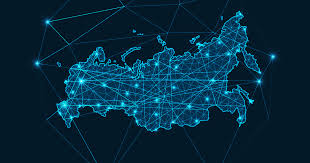
“Unlike most countries that depend on global platforms, Russia has good examples of successful domestic digital marketplaces. This is a real and meaningful achievement by Russian business, one that we can and should be proud of.
We will continue to create conditions that allow Russian digital platforms to grow and compete with international giants. A draft law has been prepared, which will be the first step towards building a modern regulatory framework for the platform economy. I am asking the State Duma to expedite the adoption of this draft law.
I should add that the digital platform sector also has its problems, including unfair business practices, violations of competition rules, and misuse of data. I am asking our colleagues from the Presidential Executive Office, together with the Government and industry representatives, to discuss these issues within the framework of the interdepartmental working group.
They will conduct a thorough analysis of the current regulation of traditional, offline retail operations that is brick-and-mortar stores, retail chains, and so on. Much of this regulation is now outdated: it was developed in a different technological era and simply does not correspond to today’s challenges and opportunities.
Lastly, marketplaces have access to a vast amount of market data, giving insight into the health of businesses. They understand what kind of support businesses need, whether it is advertising, product distribution, personnel recruitment, or access to loans.
It is necessary to use these possibilities for developing small and medium-sized businesses across the country. I ask the Government to prepare proposals on coordinating and aligning information and other support tools for the promotion of business available to digital platforms and the state, including financial and guarantee mechanisms of the SME Corporation.
Our own, independent solutions, including digital solutions, should be used to strengthen the foreign trade infrastructure, including logistics, insurance and payment systems.
We have already launched the state system of electronic carriage documents. All basic documents for cargo carriage by vehicles – the consignment note and the shipping manifest – can now be executed in electronic form. More than 1.5 million such documents are issued every month.
We will adopt digital, platform solutions for the entire transport network of Russia, including road, air, rail, river and sea transport. In other words, we are talking about creating a National Digital Transport and Logistics Platform.
International transport arteries running across our country, including the Trans-Arctic Transport Corridor stretching from St Petersburg to Vladivostok via Murmansk, as well as others, will be developed based on such modern technological solutions.
As for payment infrastructure, we will keep on working hand in glove with our BRICS colleagues and create efficient, reliable and, I repeat, independent from external interference mechanisms and services.
In this respect, of course, the experience of our countries in creating and circulating digital national currencies is highly demanded. In Russia, the relevant pilot project has been underway for almost two years. All the basic operations have been tested, including opening and closing accounts, transfers between individuals and legal entities, and payment for goods and services.
Our present task is to make the use of the digital ruble massive among citizens, businesses and banks. I ask the Bank of Russia and the Government to accelerate the necessary procedures and set the deadlines for transition to a new stage of technological development in our financial area.”
RPA: The Digital Ruble is expected to be launched in Russia later this year pending decisions from the Central Bank of Russia.
Foreign Trade
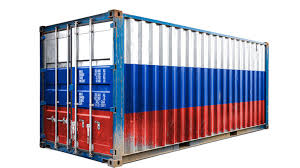
“The fourth area of structural changes is bringing a new quality to foreign trade, both exports and imports. The goal has already been set to increase non-oil-and-gas exports. To this end, we will develop relations with our partners, lift trade barriers, open new market niches, create infrastructure, and deepen investment cooperation.
We have agreed to develop long-term plans for cooperation with our key international partners. A good example of such an approach is the Strategic Interaction Plan with the People’s Republic of China, extending through to 2030. Similar plans, including one with India, are to be finalised in the near future.
We will continue implementing the International Cooperation and Exports national project. We will support initiatives from our international partners that use Russian technological platforms, which directly translates into increased demand for Russian technological solutions.
For example, major energy projects, including nuclear energy, mining and processing industries, will be implemented in the CIS countries, including Belarus, Uzbekistan, and Kazakhstan, as well as in Turkiye, Vietnam and a number of other countries. They are based on Russian technological solutions and involve Russian financial structures.
Increasing our non-oil-and-gas exports is just one of our foreign trade priorities. It is equally essential to systematically transform, change the structure of our imports – the products we purchase, while gradually increasing the share of labour-intensive goods and services that require significant labour resources, physical and manual labour.
Russia instead should focus on the production of more sophisticated, more complex goods and services with a high degree of automation and high added value, that will also contribute to improved quality of employment within Russia.
And of course, together with our EAEU partners, we will continue to fine-tune our customs and tariff policies in order to encourage the creation of new production chains and facilitate the transfer of advanced technological solutions to our countries. This will also help improve the quality of employment and create high-paying jobs here in Russia.”
RPA: Putin again discussing the transition of the Russian economy. Comments comparing the national economy to a ‘sovereign gas station’ are now redundant. Energy represents about 20% of Russia’s total GDP and about 40% of its revenues, meaning non-energy revenues are already dominant. However more needs to be done to lessen the impact of energy sanctions and the relatively simple way in which this sector can be targeted. Industrial diversification is a key issue for Russia.
Defence & Security
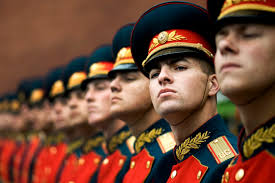
“Russia’s finances, infrastructure, and the real sector of the economy are developing on the principles of technological effectiveness, flexibility, and the capacity for rapid response to external challenges, as well as to shifts in demand from our citizens and our foreign partners.
This approach is fully applicable not only to the civilian sector but also to the fields of defence and security, and to the activities of the defence industry. Our meeting has always focused primarily on economic development, economic growth, and the state of the economy. However, in today’s world, the boundary between the defence industry and civilian sectors of the economy is becoming increasingly blurred. In some countries, no such distinction exists at all.
The profound changes taking place in this area represent the fifth direction of structural economic renewal and, more broadly, the strengthening of our sovereignty. The key principles here are as follows.
First, technological effectiveness at every stage – from development and production to logistics, procurement, and supply to specific military units. It is necessary to continuously analyse technological and organisational innovations in the civilian sector and promptly apply them in the defence and security domains.
Wherever feasible, it is vital to achieve integration between the defence industry and the civilian sector, facilitating the production of dual-use goods – though in many cases, this does not require special measures, as certain items are dual-use by their nature – which are in demand in areas such as maritime and river technology, aircraft construction, the electronics industry, medical equipment manufacturing, agriculture, and beyond.
I would go further: we must move beyond the classification of companies as either exclusively defence enterprises or purely civilian ones. As I have just noted, the current trajectory is such that the most competitive actors are high-technology holdings capable of addressing both military and civilian tasks.
Second, the pace of change. Today, for global business leaders – including some of our own companies – the timeframe from concept to product launch has been reduced to quarters or even months. The period from production to consumer delivery is now measured in days rather than weeks. The defence and security sphere must adapt to these standards.
And of course, flexibility. This involves enhancing the role of commanders of military units and formations, as well as the heads of defence industry enterprises, including in decision-making – from maintenance and testing of new equipment and weapons systems to the development of effective tactics to achieve results. The importance of these levels is increasing.
I believe that colleagues in both the military and the defence industry sectors will agree with me on this point. It is also essential to establish a mechanism for the rapid spreading of such best practices. We are achieving this.
Fourth, economic efficiency in ensuring security and addressing defence-related goals. Compelling examples include the implementation of surveillance and monitoring systems using artificial intelligence, which has significantly reduced the number of offences, for instance, in Moscow. Additionally, the deployment of inexpensive unmanned aerial vehicles has proven effective in targeting expensive military equipment. We will, of course, take into account our own negative experiences. Everything is put to good use to make the necessary and correct decisions in our chosen area.
Overall, our defence industry has picked up a good pace. The enterprises have increased the output many times over and are mastering the production of new types of armaments and military equipment.
To reiterate, we will enhance combat capabilities of the Armed Forces on a new technological basis, modernise military infrastructure facilities, and equip them with cutting-edge weapons and equipment that have proven effective in combat conditions.
At the same time, we intend to develop military-technical cooperation with friendly countries. This includes not only supply or modernisation of equipment and armaments, but also joint developments, personnel training, and creation of enterprises and production capacities on a turn-key basis.”
RPA: Beyond its own needs, Russia is the world’s third largest weapons exporter after the United States and France. As global security declines, this is a growth industrial export sector.
Russia’s Future Growth
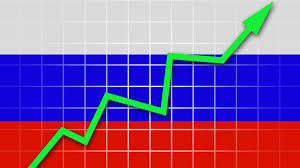
“I have focused on five key areas of structural changes in the Russian economy. These tasks are the focus of existing national projects and state programmes. Their work must be constantly fine-tuned taking into account changes in the global situation and emerging opportunities.
The global economy is undergoing the most significant transformation over the past few decades. Countries around the world are increasing their capacities, reshaping the balance of power, and the economic landscape of the planet.
For example, in the early 21st century, BRICS countries accounted for just 20% of the global economy. Today, this figure already stands at 40% of the global economy. Clearly, their share will continue to grow. It will happen inevitably, primarily due to the dynamic economies from the Global South.
This growth needs to become more sustainable and encompass as many countries as possible. To achieve this, a breakthrough development model is needed, one that is not based on the rules of neo-colonialism, where the so-called golden billion siphons off resources from other countries in the interests of a small group of the so-called elites. Not even in the interests of the people of these countries, but specifically in the interests of the elites.
If we look at how funds have accumulated, say, in the United States over the past decades, it was the elites who received the bulk of income. These are open data. Ordinary citizens and the middle class did not benefit from these windfall profits. This could be the basis for the ongoing changes, including in the political sphere.
We must strive to ensure that these changes are reflected in the quality of life of people in our countries, in research, education, technology, and infrastructure. These are the priorities that Russia has set for itself while implementing its own development agenda.
The strategic sectors and areas I have outlined today require stable, long-term capital inflows, including from international companies and investors. To ensure this, we need to create an open and equitable platform for global growth. This platform will bring together investment mechanisms, technological standards, financial and logistics services, trade instruments, and other solutions.
Let me reiterate: the task is not to modernise the outdated mechanisms of the era of globalisation – these have largely exhausted or even discredited themselves. Instead, we must propose a new development model, one free from political manipulations, one that takes into account the national interests of states. Naturally, this model must be focused on the needs of citizens and their families.”
RPA: Putin has talked many times about the need for a multi-polar world, in which the major economies of the global south are now taking the initiative away from the west. How this exactly manifests itself remains to be seen, however it is telling that the BRICS group now has a 35% share of global GDP while the G7 holds 30%. According to Statista, that trend looks set to continue.
BRICS
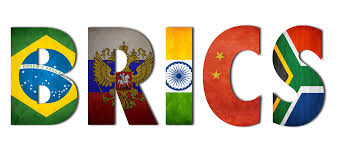
“At the BRICS summit, which took place last autumn in Kazan, as I mentioned earlier, 35 countries – representing nearly two-thirds of the world’s population and half of the global economy – expressed a shared understanding of the approaches necessary for the future of the world.
Already today, BRICS countries are setting the benchmark in the development of so-called human-centric industries. The largest projects aimed at improving living environments are being launched. BRICS states are implementing large-scale initiatives in nuclear energy and aviation, in new materials and the IT industry, as well as in robotics and artificial intelligence.
Of course, special attention is being devoted to strengthening ties within BRICS. The mutual trade turnover of our countries has already exceeded US$1 trillion and will continue to grow.
All of this, in essence, constitutes the elements of a global growth platform, built on the key principles of BRICS: consensus, parity, mutual consideration of interests, and – most importantly – openness to all who wish to join this effort.
After all, the broader the circle of states involved in shaping and developing such a platform, the stronger and more effective it will be, and the greater the benefits it will bring to all who recognise their responsibility to future generations of their nations.
Russia invites its partners to contribute to shaping a new global growth model, to jointly ensure the prosperity of our nations and the stable development of the entire world for many years to come.
Precisely for this purpose, this year we held the Open Dialogue [The Future of the World: A New Platform for Global Growth] in Moscow, with representatives from over a hundred countries participating. We intend not only to make this format a regular one but also to build an entire ecosystem around it for discussing, refining, and implementing breakthrough ideas.
The global challenges facing the modern world undoubtedly demand a global response. Solving these problems on one’s own, let alone at someone else’s expense, is simply no longer possible – it is an illusion. Only joint action within frameworks such as BRICS and some other formats can ensure the progress of civilisation as a whole.”
RPA: In his final sentence Putin acknowledges that the ushering in of a new global economy, with Russia firmly part of that dynamic, is to be wedded to multinational blocs such as BRICS. The differences between rigid, EU structures and strongly worded US trade agreements, often taking years to negotiate, versus the relative flexibility of the BRICS group are an interesting contrast.
Further Reading
President Putin’s Speech About Russian Arctic Development: Content and Analysis

